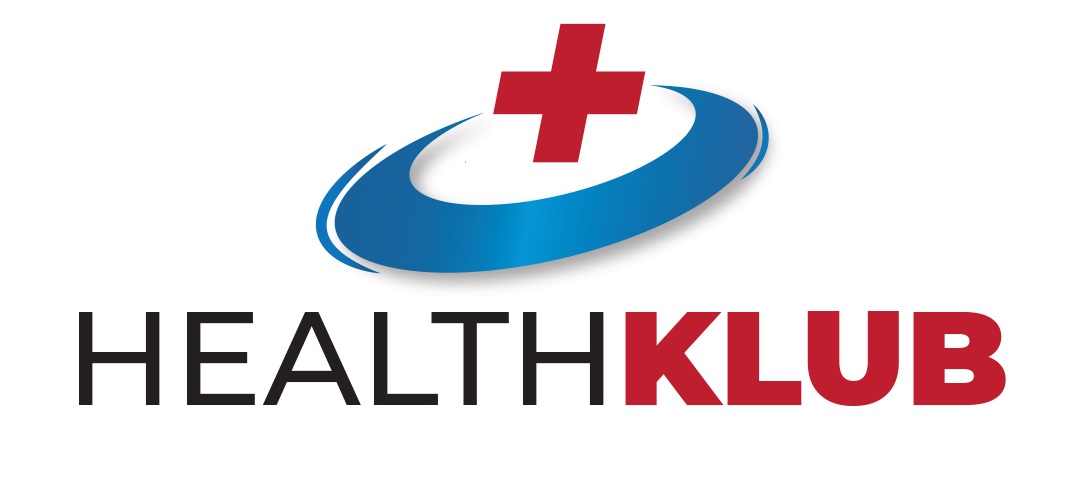Living with migraines can be a daunting challenge, especially when it comes to maintaining a successful career. Migraines are a neurological condition characterized by debilitating symptoms, including throbbing pain, nausea, sensitivity to light and sound, and in some cases, visual disturbances. These symptoms can severely disrupt an individual’s daily life, making it difficult to concentrate, perform tasks, and even attend work.
For those with migraines, the workplace can be a minefield of potential triggers and stressors. The constant exposure to fluorescent lighting, the hum of computers, and the pressure to meet deadlines can all contribute to the onset of a migraine episode. Furthermore, the unpredictable nature of migraines can make it challenging to plan and manage one’s workload effectively, leading to increased stress and anxiety.
The impact of migraines on work and career can be significant. Missed workdays, reduced productivity, and the inability to fulfill job responsibilities can all have a detrimental effect on an individual’s career progression and job security. Additionally, the stigma surrounding migraines, where the condition is often misunderstood or dismissed, can further compound the challenges faced by individuals in the workplace.
Common Challenges Faced by Individuals with Migraines in the Workplace

One of the primary challenges faced by individuals with migraines in the workplace is the unpredictability of the condition. Migraine episodes can strike without warning, leaving the individual unable to perform their duties effectively. This can lead to missed deadlines, missed meetings, and a perceived lack of reliability, which can ultimately impact an individual’s career advancement and job stability.
Another significant challenge is the management of migraine triggers in the workplace. Factors such as fluorescent lighting, strong scents, loud noises, and stress can all contribute to the onset of a migraine episode. Navigating these triggers while maintaining a productive work environment can be a delicate balancing act, requiring constant vigilance and adaptability.
The stigma surrounding migraines can also pose a significant challenge in the workplace. Many individuals with migraines may feel hesitant to disclose their condition, fearing that it will be perceived as a weakness or an excuse for poor performance. This reluctance to communicate openly about their condition can lead to a lack of understanding and support from colleagues and employers, further exacerbating the challenges faced by individuals with migraines.
Strategies for Managing Migraines at Work
Effective management of migraines in the workplace begins with understanding and addressing the specific triggers that can contribute to the onset of an episode. This may involve making adjustments to the work environment, such as using task lighting instead of fluorescent bulbs, avoiding strong scents, and minimizing exposure to loud noises.
Developing a personalized migraine management plan is also crucial. This plan may include identifying and avoiding potential triggers, maintaining a consistent sleep schedule, staying hydrated, and incorporating stress-reducing techniques like meditation, deep breathing, or yoga. By proactively managing their migraines, individuals can minimize the impact on their work performance and reduce the frequency and severity of episodes.

In addition to personal strategies, it is essential to build a support network within the workplace. Communicating openly with employers and colleagues about the challenges of living with migraines can foster understanding and facilitate the implementation of reasonable accommodations. This may include the ability to work from home during a migraine episode, flexible scheduling, or access to a quiet space for rest and recovery.
Communicating with Your Employer and Colleagues about Migraines
Effective communication with your employer and colleagues is a critical component of navigating work and career with migraines. It is important to approach this conversation with a positive and proactive mindset, focusing on the strategies and accommodations that can help you manage your condition and maintain a high level of productivity.
When discussing your migraines with your employer, be prepared to provide a clear and concise explanation of the condition, including its symptoms, triggers, and the impact it can have on your work. Emphasize your commitment to your job and your desire to find solutions that allow you to continue performing your duties effectively. Offer specific examples of how you have successfully managed your migraines in the past, and be open to suggestions for reasonable accommodations that can help you thrive in your role.
It is also essential to build a supportive network among your colleagues. Share information about your condition and the strategies you use to manage it, and encourage them to be understanding and accommodating when you experience a migraine episode. By fostering open communication and understanding, you can create an environment that is more conducive to your success and well-being.
Workplace Accommodations for Individuals with Migraines
Workplace accommodations can play a crucial role in helping individuals with migraines manage their condition and maintain a successful career. These accommodations can range from simple adjustments to the work environment to more comprehensive changes in work schedules and responsibilities.
One of the most common accommodations for individuals with migraines is the ability to work from home during a migraine episode. This allows the individual to rest in a quiet, comfortable environment, minimizing exposure to potential triggers and reducing the impact on their work productivity. Flexible scheduling, which may include the ability to take breaks or adjust work hours as needed, can also be beneficial.

Other potential accommodations include access to a quiet space or a dark room for rest and recovery, the use of noise-cancelling headphones or earplugs, and the ability to adjust lighting and reduce glare on computer screens. Employers may also consider providing ergonomic equipment, such as adjustable desks or chairs, to help minimize physical discomfort and stress during the workday.
Balancing Work and Self-Care: Tips for Preventing Migraines
Maintaining a healthy work-life balance is crucial for individuals with migraines, as stress and burnout can be significant triggers for migraine episodes. Developing a comprehensive self-care routine can help prevent and manage migraines, ensuring that you can continue to thrive in your career.
One of the most important aspects of self-care for individuals with migraines is getting enough sleep. Establishing a consistent sleep schedule and practicing good sleep hygiene, such as avoiding screens before bedtime and creating a relaxing bedtime routine, can help regulate the body’s natural circadian rhythms and reduce the risk of migraine episodes.
Incorporating stress-reducing activities into your daily routine is also essential. This may include practices like meditation, yoga, or gentle exercise, which can help lower stress levels and improve overall well-being. Additionally, taking regular breaks throughout the workday, even if they are short, can help you recharge and prevent the buildup of tension and anxiety that can trigger migraines.
Navigating Career Decisions with Migraines
For individuals with migraines, making career decisions can be a complex and daunting process. It is essential to carefully consider the potential impact of a particular job or career path on your condition and overall well-being.
When exploring new job opportunities, it is crucial to research the work environment, job responsibilities, and potential triggers that may exacerbate your migraines. This may involve asking detailed questions during the interview process, such as the availability of accommodations, the flexibility of work schedules, and the prevalence of potential triggers like fluorescent lighting or loud noises.
In some cases, individuals with migraines may choose to pursue careers that offer a greater degree of flexibility and control over their work environment. This may include remote work, freelancing, or entrepreneurship, where they can create a workspace that is tailored to their specific needs and triggers. Alternatively, they may opt for roles that involve less exposure to common migraine triggers, such as those in the healthcare or education sectors.
Support Resources for Individuals with Migraines in the Workplace
Navigating the challenges of work and career with migraines can be a daunting task, but there are numerous support resources available to help individuals manage their condition and thrive in their professional lives.
One valuable resource is the American Migraine Foundation (AMF), a non-profit organization dedicated to improving the lives of those affected by migraines. The AMF offers a wealth of information and resources, including educational materials, support groups, and advocacy initiatives aimed at raising awareness and promoting understanding of migraines in the workplace.

Additionally, many employers and professional organizations have developed programs and initiatives to support individuals with chronic health conditions, including migraines. These may include employee assistance programs, disability management services, and workplace accommodations policies. Researching and taking advantage of these resources can be instrumental in navigating the challenges of work and career with migraines.
Personal Stories and Experiences of Individuals Managing Migraines in Their Careers
The journey of managing migraines in the workplace is not an easy one, but many individuals have found ways to overcome the challenges and achieve success in their careers. By sharing their personal stories and experiences, these individuals can provide valuable insights and inspiration for others facing similar struggles.
One such individual is Sarah, a marketing manager who has been living with migraines for over a decade. “Migraines have been a constant battle in my career, but I’ve learned to be proactive in managing them,” she says. “I’ve worked closely with my employer to implement accommodations, like the ability to work from home during a migraine episode, and I’ve also developed a personalized self-care routine that helps me prevent and manage my migraines.”
Another example is John, a software engineer who has found success in his career by embracing the flexibility of remote work. “Working from home has been a game-changer for me,” he explains. “I can control my environment, minimize exposure to triggers, and take breaks as needed without feeling the pressure of being in an office setting. It’s allowed me to thrive in my career while managing my migraines effectively.”
These personal stories demonstrate the resilience and determination of individuals who have navigated the challenges of work and career with migraines. By sharing their experiences and the strategies they have employed, they can inspire and empower others to find their own path to success.
Conclusion
Living with migraines can present significant challenges in the workplace, but with the right strategies and support, individuals can find a harmonious balance between managing their condition and achieving professional success. By understanding the impact of migraines on work and career, developing effective coping mechanisms, communicating openly with employers and colleagues, and accessing the available resources, individuals with migraines can thrive in their chosen fields.
Embrace the strategies outlined in this article, and don’t be afraid to advocate for your needs and seek the support you require. With determination, resilience, and a proactive approach, you can navigate the complexities of work and career with migraines and emerge as a successful, thriving professional. Your migraines do not define you; they are simply a part of your journey, and with the right tools and mindset, you can overcome them and achieve your professional aspirations.


